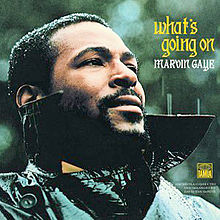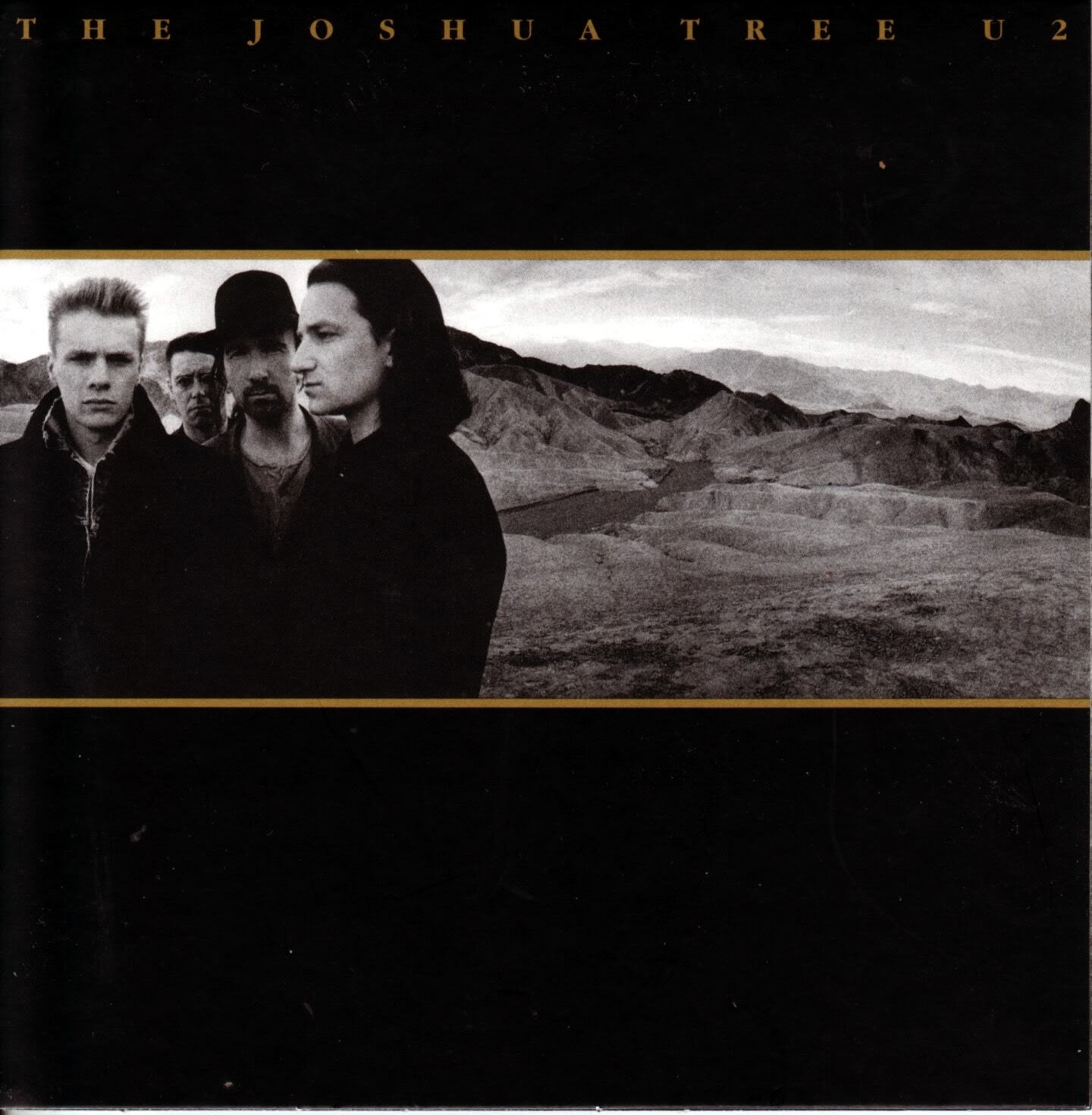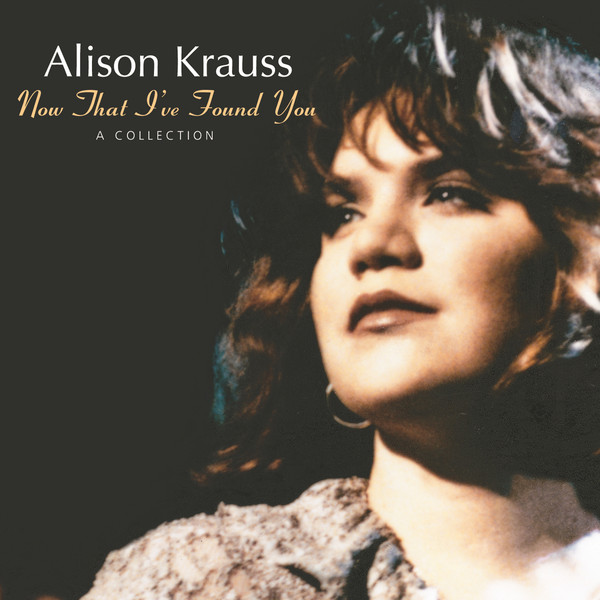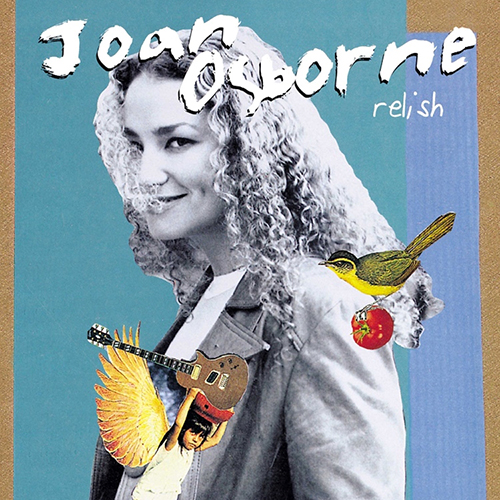Now Playing
Current DJ: Michael Rick
Fabiana Palladino Can You Look In The Mirror? from Fabiana Palladino (Paul Institute / XL) Add to Collection
Requests? 773-DJ-SONGS or .(JavaScript must be enabled to view this email address)
by Josh Friedberg
 I don’t know I’ve ever been so wrong about an album in my life.
I don’t know I’ve ever been so wrong about an album in my life.
When I was younger, there were a lot of albums I called “overrated” after one casual listen because I didn’t understand the hype around them. It’s true, as I thought in the early 2000s, that Marvin Gaye’s 1971 soul masterpiece, What’s Going On, is a sacred cow, often treated with such reverence as if it is immune to criticism. It shouldn’t be, but perhaps it needs to be put in a fuller social context (the Vietnam War, African American freedom struggles, environmental degradation, youth movements, etc.) to be most appreciated.
That said, Smokey Robinson was right when he said around 2000 that the album makes more sense today than it did when it was released—deindustrialization and the growth of the prison-industrial complex, among other factors, have disastrously impacted communities of color in this country, and today Gaye’s opus continues to resonate amid the turmoil that spawned Black Lives Matter.
What’s Going On is also the most acclaimed album ever by an African American artist, according to statistical aggregate acclaimedmusic.net. White rock critics have loved this album since it came out, with Dave Marsh calling it the greatest black pop album ever, though African American critics have also lauded this album. For example, Cornel West called it something like the greatest musical achievement created by an African American.
So one could be forgiven for having unusually high expectations for such an album. When I first heard the album on CD, I was very familiar with the title track, widely hailed as one of the greatest songs ever recorded, but I was unprepared to deal with an album that was conceived as an album, rather than a collection of songs. There are some relative fragments on What’s Going On that don’t stand out like the singles do, and I was merciless in my response. At one point in the first half of the 2000s, I guested on a music talk show talking about overrated albums, calling out What’s Going On for inconsistency—as if consistency of quality across tracks should be the goal of every album.
 by Bradley Morgan
by Bradley Morgan
Last Saturday, I ventured out to Soldier Field to see U2 play their masterpiece record The Joshua Tree in its entirety. I had been looking forward to this show for months. I even invited my dad and he drove over six hours to experience his first U2 concert.
Of course, I had seen Ireland’s favorite sons play a few times already including a greatest hits show and a concert promoting their latest studio album. However, this tour was different. The Joshua Tree Tour 2017 was designed with duality in mind; to commemorate the past but to also understand its relevance in the present. While this show signified a nostalgic trip for some, the tour set out to make a statement about the complexities of humanity and society. In preparation for the performance, I had to go back and find out not only what The Joshua Tree meant to me as art but also what U2 represented that made them so relatable to me over the years.
My path toward U2 fandom began at age twelve back in the fall of 2000 while I was living in Alaska. Anchorage didn’t really have any record stores or cool hot spots where hipsters could browse indie music stacks and discover the next big underground thing. Not only that, but streaming media online was not as sophisticated and easy to use as it is today, plus my dad wouldn’t let me download music. So, the only musical outlets available to me were whatever played on commercial radio and the limited selections of a local Wal-Mart or FYE.
That fall, U2 released their single “Beautiful Day” and it was life-changing. The sound was big and anthemic; qualities that inspired a budding teenager who had a lot to say and demanded that he be heard. The optimism and humanity within that song truly spoke to me.
Prior to that, U2 was a band that I had only heard of before. I had seen copies of War and The Unforgettable Fire in my mother’s CD collection, but I never listened to them before because what teenager wants to listen to their parents’ music collection? I wanted something new and relevant to me right then and there, despite the irony that this exciting new addition to my life was being delivered by an already established and accomplished band.
The music itself wasn’t the only thing that made me connect with the band. This band had something else going for them, too. They were Irish. That instantly made them more relatable and meaningful to me. As the son of an English immigrant with Irish grandparents, that made U2 so much more special. A bond was established through a shared ancestry that I wouldn’t quite understand until much later.

written by Kyle Sanders
In a pop cultural world soaked in nostalgia (remakes, reboots, and revivals--oh my!), even reissues can be a saving grace to a long forgotten, often underrated work of art. A band like Fleetwood Mac may not be underrated by any means (and some naysayers, perhaps, find them a bit overrated), but thanks to the nostalgic mentality of reminiscing, one would find that this year alone has found the musical group celebrating a handful of milestone anniversaries.
In 2017, not only has the band celebrated fifty years of making music, they've also celebrated the fortieth anniversary of their best-selling album, Rumours, the thirty-fifth anniversary of their early eighties contribution, Mirage, as well as the twentieth anniversary of their biggest comeback, The Dance.
Since that well-received reunion special, the band has maintained a solid presence in the touring circuit, as well as frequent pop-ups on classic rock radio stations. Just recently, their signature track "The Chain" was used to promote the blockbuster sequel Guardians of the Galaxy Vol. 2, and was featured on that film's soundtrack as well.
Yet while most remember the band as a Seventies Supergroup, few often regard their album Tango In the Night as a notable musical foot note of the late 1980s. Coincidentally, that album celebrates its thirtieth anniversary this year, and in recognition of that album's birthday--as well as the sixty-ninth birthday of notable band member Stevie Nicks--let us take look back at an album that remains lesser known yet still influential in the world of pop music.
 By Josh Friedberg
By Josh Friedberg
Alison Krauss has been recording bluegrass, country, and pop since she was a teenager, and her 1995 compilation, Now That I’ve Found You: A Collection, first exposed her to a mass audience years before her appearance on the smash soundtrack to the Coen brothers’ movie O Brother, Where Art Thou?
For millions of country fans, including my mother, Now That I’ve Found You introduced them to one of the most beautiful voices of the last generation. I heard this album when I was a kid, and I was drawn to the quiet, largely acoustic sound, which reminded me of a variation on the ‘60s folk in my parents’ record collection.
Hearing it now after seeing the CD at a library, I’m amazed at how well it holds up. I’ve generally enjoyed this collection more than the O Brother, Where Art Thou? soundtrack, despite Krauss’s excellent contributions on that album. Now That I’ve Found You is gorgeous and intimate, containing moments of both older and more contemporary styles.

by Joshua Friedberg
Any discussion of Joan Osborne’s career begins—and often ends—with her one hit, the controversial “One of Us,” a song that was everywhere c. 1995. The problem is that as great as that single is, it doesn’t show off her soulful voice. I’ve seen reviews of her music that express surprise that she can sing at all, but her multiplatinum disc, Relish, includes plenty of surprises for the average listener who purchased it for that one hit.
When I first got into this album around seventh grade, I was listening to a lot of canonical classic rock, and I seriously thought that Relish was one of the greatest albums ever made. I was shocked when I didn’t see it on “best albums of the 1990s” lists. Of course, today, having heard more music from the ‘90s, I can see the relative folly of my youthful judgment, but going back to this album, I’m surprised at how well most of it holds up.
Granted, this is a more retro-sounding album than more acclaimed albums of 1994-95, such as PJ Harvey’s To Bring You My Love and Hole’s Live Through This. But the electric piano straight from ‘70s soul, the swampy harmonica groove of “Dracula Moon,” and the eerie slowness of her cover of Bob Dylan’s “Man in the Long Black Coat” are appealing to me, regardless of whether or not they would be to most rock critics oriented towards innovation.
The album sounds more akin to the swaggering rock ‘n’ soul of the Black Crowes than to most of the Lilith Fair crew of singer-songwriters that Osborne toured with in 1997: there’s a real groove in tracks like the rocking “Right Hand Man” and the T. Rex-sampling “Ladder” that you don’t associate with the music of (admittedly talented) artists like Sarah McLachlan and Tori Amos.
So, this album holds up as a retro (some might say “timeless”) collection of songs. Other highlights include “St. Teresa,” “Pensacola,” and “One of Us,” of course. Just a warning, though: much of the album doesn’t sound at all like that one hit.